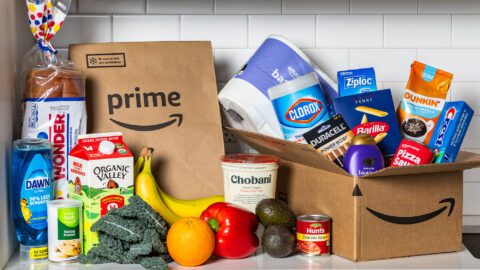By design, subscription services are primarily tools for customer retention, but new research indicates they deliver other benefits as well: encouraging shoppers to try additional channels and new product categories, and increasing the spend levels of already valuable customers. These benefits are derived from the way subscription services build relationships between shoppers and retailers, a process Amazon encourages across its offerings.
“Everybody talks about Amazon Prime and Subscribe to Save, they talk about Alexa and Dash, and the media speaks about these very disparately and disconnected,” said Greg Alvo, Founder & CEO of Ordergroove in an interview with Retail TouchPoints. “What I think we’re seeing is they’re all part of the same macro trend and strategy, which is about creating recurring customers, developing relationships with them and making it all about driving frictionless experiences and recurring revenue.”
While most retailers can’t match Amazon’s technological prowess and collection of shopping channels, they still can drive frictionless, recurring purchases through subscription programs. Retailers reported a number of subscription service-driven benefits in a survey by Ordergroove and NAPCO Research, including:
- Greater revenue (67%);
- Greater profitability (61%);
- Increased customer loyalty (55%); and
- Greater revenue predictability (50%).
Recently, a number of retailers have embraced subscription programs as a way to nurture long-lasting relationships. In the past two months alone, Urban Outfitters announced a women’s apparel subscription box program, Schick parent Edgewell Personal Care acquired Harry’s and Walmart added KIDBOX-branded styleboxes to its web site. Urban Outfitters and Walmart in particular will benefit from the fact that subscriptions don’t just boost individual categories — they create a “halo effect” that can drive sales across related areas.
“Customers spend more money because of the convenience of the experience,” said Alvo. “There’s a relationship that develops, and they feel a level of commitment — it’s an intimacy between the brand and the retailer on the consumer. There are also chances to deepen that relationship with upsell and cross-selling opportunities. You don’t just see spend increasing within the core categories they are subscribing to, but outside categories as well.”
The average customer spends 60% more in the six months following enrollment into a recurring program, according to Ordergroove’s subscription study. While the study didn’t determine the exact cause for this increase, it did determine a significant before-and-after difference in shopping habits.
Subscriptions Bring Loyal Shoppers To The Next Level
Subscription programs not only encourage one-time customers to become repeat shoppers; they also can increase the spend by high-quality leads. When “very good” non-subscriber beauty customers (those who spent approximately $100 on average over a six month period) and “excellent” customers (who spent about $250) became subscribers, their spending jumped 40%, according to the research.
The change was even more dramatic in terms of frequency: “very good” customers doubled their purchase frequency, while “excellent” shoppers rose 70%. In short, subscription programs can take high-spending shoppers and give them a reason to make more consistent purchases.
“One of our investors, [Professor of Marketing at Wharton] Peter Fader, talks about how you can turn a bad customer into a good customer, or you can just go find more customers,” said Alvo. “Easier said than done, but if you know where those good fish are and where you should be fishing for more of them, you can absolutely focus on acquiring more of those best customers using clever marketing tactics and acquisition campaigns.”
The specific strategy for getting these customers signed up for a recurring program varies by category, according to Alvo. A discounted first delivery works, as does a free sample — the key is getting shoppers on board with the right plan for their needs, then further developing the relationship from there.
Established Subscription Services Can (And Should) Evolve
Even retailers with established subscription services can benefit by examining their program to see where it can be improved. For instance, retailers can expand their programs by integrating them with other channels. For example, signing up subscribers in a physical store is “a rocket ship to success every time,” according to Alvo. Companies using these techniques should determine their goals, then figure out how to extend an existing program to achieve them.
“There are many different ways to grow these programs, and new experiences retailers can layer on,” said Alvo. “Maybe I started off with a subscription service, but I want to get into paid loyalty or a membership service like an Amazon Prime, or maybe I want to expand the number of categories I’m touching. There are many different ways to increase the number of participants from a consumer standpoint through A/B testing, promotional capabilities, optimization capabilities, new experiences and new channels like retail stores.”













